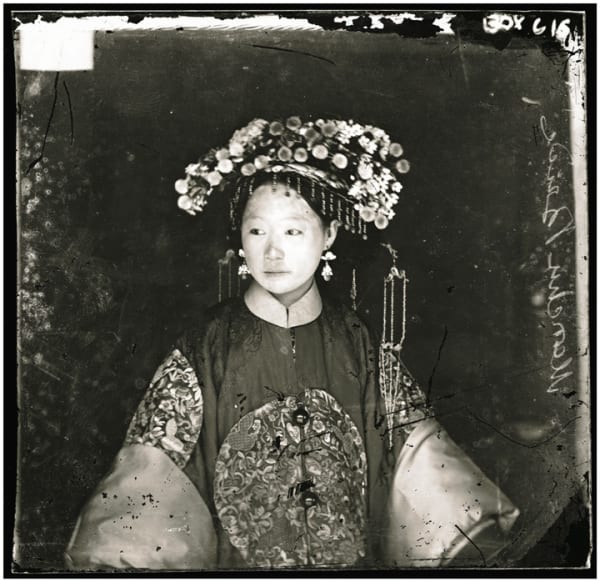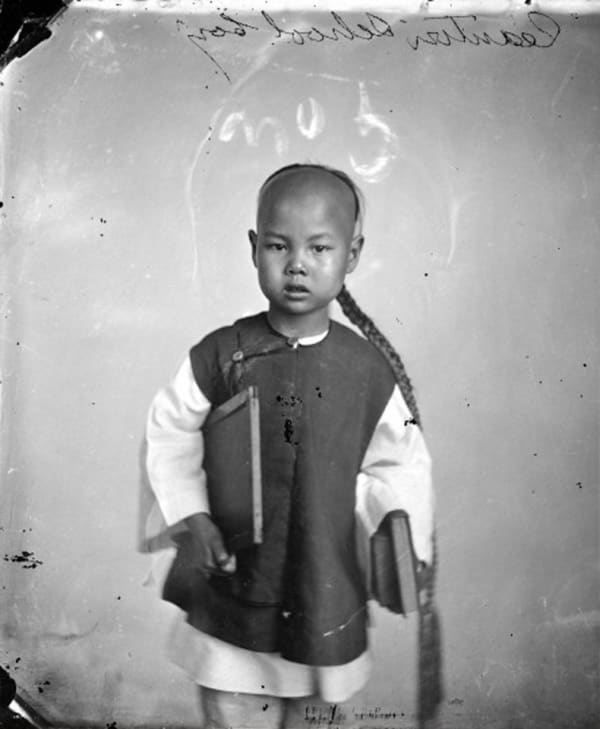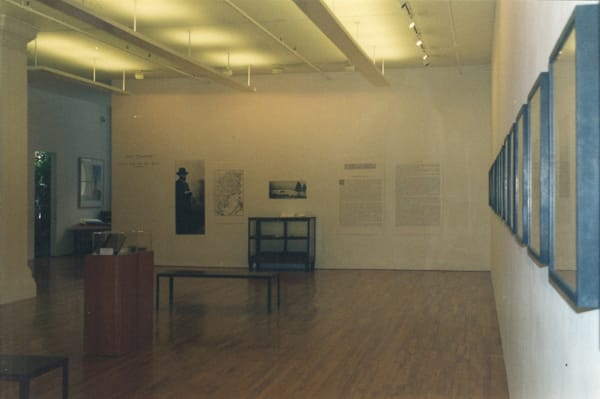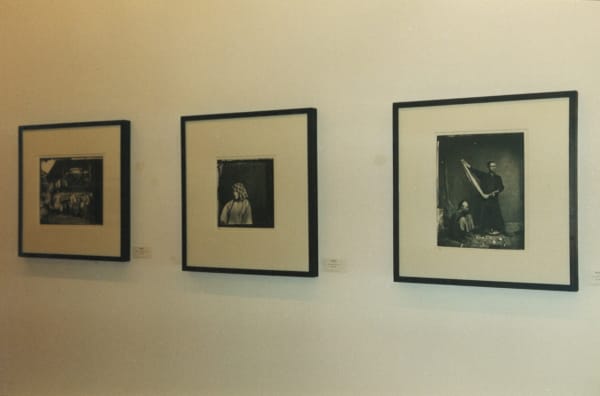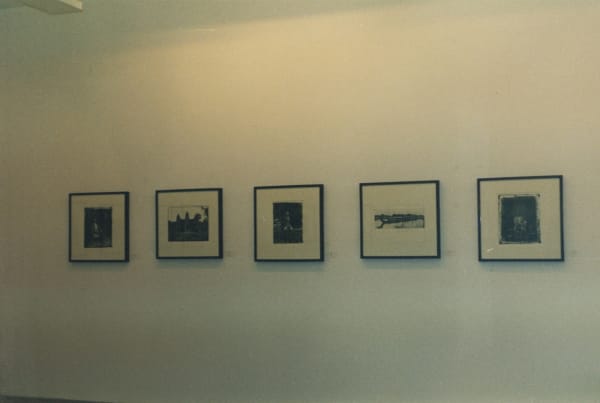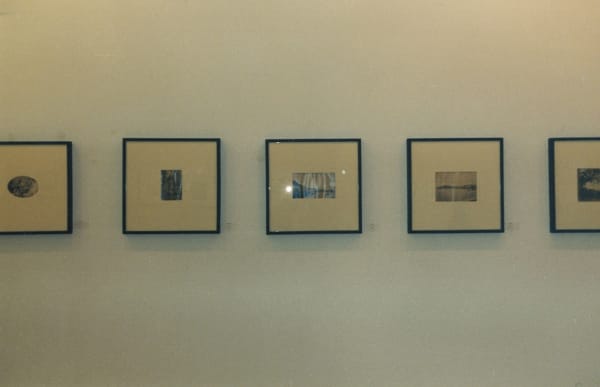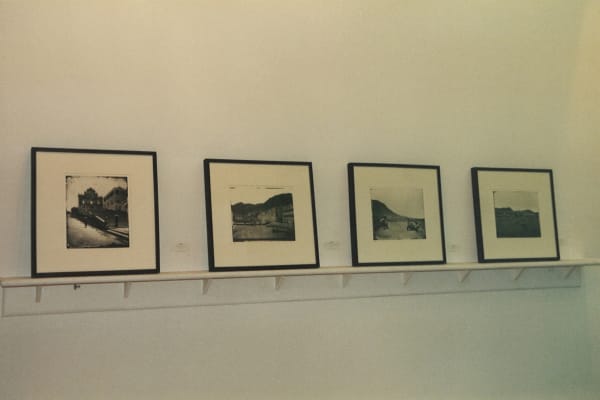John Thomson: Photographs of China and The Far East
-
 John Thomson, Manchu Bride, Peking, circa 1871-1872 (printed later)
John Thomson, Manchu Bride, Peking, circa 1871-1872 (printed later) -
 John Thomson, Chinese Skipper, Yangtze, 1871 (printed later)
John Thomson, Chinese Skipper, Yangtze, 1871 (printed later) -
 John Thomson, Old Woman, Canton, circa 1868-1870 (printed later)
John Thomson, Old Woman, Canton, circa 1868-1870 (printed later) -
 John Thomson, Canton School Boy, circa 1868-1870 (printed later)
John Thomson, Canton School Boy, circa 1868-1870 (printed later)
-
 John Thomson: Photographs of China and The Far East | Installation View
John Thomson: Photographs of China and The Far East | Installation View -
 John Thomson: Photographs of China and The Far East | Installation View
John Thomson: Photographs of China and The Far East | Installation View -
 John Thomson: Photographs of China and The Far East | Installation View
John Thomson: Photographs of China and The Far East | Installation View -
 John Thomson: Photographs of China and The Far East | Installation View
John Thomson: Photographs of China and The Far East | Installation View -
 John Thomson: Photographs of China and The Far East | Installation View
John Thomson: Photographs of China and The Far East | Installation View -
 John Thomson: Photographs of China and The Far East | Installation View
John Thomson: Photographs of China and The Far East | Installation View -
 John Thomson: Photographs of China and The Far East | Installation View
John Thomson: Photographs of China and The Far East | Installation View -
 John Thomson: Photographs of China and The Far East | Installation View
John Thomson: Photographs of China and The Far East | Installation View -
 John Thomson: Photographs of China and The Far East | Installation View
John Thomson: Photographs of China and The Far East | Installation View -
 John Thomson: Photographs of China and The Far East | Installation View
John Thomson: Photographs of China and The Far East | Installation View -
 John Thomson: Photographs of China and The Far East | Installation View
John Thomson: Photographs of China and The Far East | Installation View -
 John Thomson: Photographs of China and The Far East | Installation View
John Thomson: Photographs of China and The Far East | Installation View -
 John Thomson: Photographs of China and The Far East | Installation View
John Thomson: Photographs of China and The Far East | Installation View -
 John Thomson: Photographs of China and The Far East | Installation View
John Thomson: Photographs of China and The Far East | Installation View -
 John Thomson: Photographs of China and The Far East | Installation View
John Thomson: Photographs of China and The Far East | Installation View -
 John Thomson: Photographs of China and The Far East | Installation View
John Thomson: Photographs of China and The Far East | Installation View -
 John Thomson: Photographs of China and The Far East | Installation View
John Thomson: Photographs of China and The Far East | Installation View -
 John Thomson: Photographs of China and The Far East | Installation View
John Thomson: Photographs of China and The Far East | Installation View -
 John Thomson: Photographs of China and The Far East | Installation View
John Thomson: Photographs of China and The Far East | Installation View -
 John Thomson: Photographs of China and The Far East | Installation View
John Thomson: Photographs of China and The Far East | Installation View -
 John Thomson: Photographs of China and The Far East | Installation View
John Thomson: Photographs of China and The Far East | Installation View -
 John Thomson: Photographs of China and The Far East | Installation View
John Thomson: Photographs of China and The Far East | Installation View -
 John Thomson: Photographs of China and The Far East | Installation View
John Thomson: Photographs of China and The Far East | Installation View -
 John Thomson: Photographs of China and The Far East | Installation View
John Thomson: Photographs of China and The Far East | Installation View -
 John Thomson: Photographs of China and The Far East | Installation View
John Thomson: Photographs of China and The Far East | Installation View -
 John Thomson: Photographs of China and The Far East | Installation View
John Thomson: Photographs of China and The Far East | Installation View -
 John Thomson: Photographs of China and The Far East | Installation View
John Thomson: Photographs of China and The Far East | Installation View -
 John Thomson: Photographs of China and The Far East | Installation View
John Thomson: Photographs of China and The Far East | Installation View -
 John Thomson: Photographs of China and The Far East | Installation View
John Thomson: Photographs of China and The Far East | Installation View -
 John Thomson: Photographs of China and The Far East | Installation View
John Thomson: Photographs of China and The Far East | Installation View -
 John Thomson: Photographs of China and The Far East | Installation View
John Thomson: Photographs of China and The Far East | Installation View -
 John Thomson: Photographs of China and The Far East | Installation View
John Thomson: Photographs of China and The Far East | Installation View -
 John Thomson: Photographs of China and The Far East | Installation View
John Thomson: Photographs of China and The Far East | Installation View
John Thomson, one of the great figures of nineteenth century photography, is known for the unusual and exotic nature of his chosen subject matter. Born in Edinburgh, Scotland in 1937, Thomson took up photography as a profession in his early twenties. For ten years, from 1862, he traveled and explored the Far East, visiting Hong Kong, Singapore, Penang and the Malay Peninsula, Siam, Cambodia, Vietnam, Formosa and especially China.
Utilizing a large wooden box-type camera capable of accommodating a glass plate of up to 12 x 16 inches, John Thomson photographed commoners and kings, attempting to capture the individual behind the veneer of social status. His photographic record of the Far East documented a complete panorama of the cultures and people of the region at a time when Westerners were a few and curious lot. John Thomson not only created a photographic history, but also wrote numerous articles and books on his travels and views of life in the Far East.
There is no doubt that it was Thomson's sympathetic approach to his subjects, and the dignity with which he imbued them, as much as his great technical expertise that enabled him to produce such an outstanding photographic documentary. It is this marriage between sensitivity, technical expertise and sheer professionalism, not to mention his voluminous literary output and descriptions of the scene and people that he photographed, that has earned Thomson the tile of the 'first of the great photojournalists.'
His work, which has only recently gained full recognition, represents one of the great photo-historical records in the history of documentary photography.
JOHN THOMSON'S PHOTOGRAPHIC TECHNIQUE (VINTAGE PRINTS)
Thomson used the wet collodion process, whereby single glass plates were sensitized just before exposure, then quickly exposed while still wet. This meant that the photographer could see the results of his work immediately. However, it also required an enormous quantity of equipment, the plates had to be developed on the spot in total darkness and chemicals prepared, in many cases from raw materials available at the photographic location. The processing had to be carried out in a portable tent, large enough to contain weights and measures, chemicals, funnels and instruments. A fresh water supply would also have been necessary and to carry all, a team of probably about eight to ten bearers. It is hard to imagine today the hardships and difficulties of producing photographs in remote regions. Such problems were a part of Thomson's every working day. Photographic enlargements were unknown at the time of Thomson's work in the Far East. If a large print was required, a large wooden box-type camera capable of accommodating a glass plate of up to 12 x 16 inches (sometimes even larger) was required. Throughout his travels he used a small stereoscopic camera, making two small images at one time, in addition to a number of larger cameras for such pictures.
The photographs in the John Thomson collection are taken from 10 x 12 glass plates. In addition, several are from stereo negatives, where only one half of the plate has been exposed.
